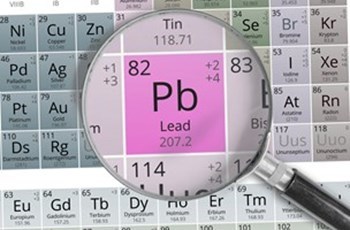Lead Poison Prevention Week
Thursday October 21, 2021
Branch-Hillsdale-St. Joseph Community Health Agency encourages residents to be aware of lead exposure
October 24 – October 30, 2021 is Lead Poisoning Prevention Week and BHSJ CHA encourages residents to get the facts, get your home tested, and get your child tested. Lead exposure and poisoning is preventable.

Lead is a naturally occurring metal that is found throughout the earth. It has been used throughout history in products such as batteries, cosmetics, construction materials, plumbing pipes and fixtures, paint, and gasoline. In the 1970s and 1980s the federal government began banning lead in products, but lead is still found in our homes today. According to the Michigan Department of Health and Human Services MiTracking Data Portal, approximately 75% of the homes in Branch, Hillsdale and St. Joseph counties were built prior to 1980. Lead in the home can be found in paint, dust, drinking water, soil, certain types of work places, some hobbies, some household items, and imported goods.
Exposure to lead is dangerous for adults and children. Lead exposure in children can cause behavioral issues, can affect hearing, delay development, and decrease cognitive performance. According to MiTracking Data Portal, 5.9% of Branch, 3.2% of Hillsdale and 4.6% of St. Joseph county children tested in 2019 had elevated blood lead levels. In Michigan a blood lead level of 4.5mcg/dl is considered “elevated” and a cause for concern. Women who are pregnant, children age 12 months, and children age 24 months should be screened.
Here are five things you can do to prevent lead poisoning:
1. Find the lead in your home. Most children get lead poisoning from homes with lead-based paint. Remove any products recalled for lead based paint. Watch for lead in items purchased in other countries. If you work with lead-based products in your job or hobby, remove clothing and shoes as soon as you arrive home and put them in the laundry. If you have cracked or chipped paint on walls, window sills, trim and doors, you can use an encapsulant such as traditional polymers, epoxy, or polyurethane polymers. You can provide temporary protection by using a barrier such as closing off the room with lead present, use contact paper or duct tape to temporarily cover holes, cracks, or prevent access to lead paint areas. Test soil samples near the house and outbuildings for lead. Lead dust and chips from the building exterior can contaminate the soil where children play. Have your home and land inspected by a licensed lead inspector.
2. Know your plumbing. Find out about the water service line to your home and the fixtures within it.
3. Clean up lead dust. If you are remodeling your home, be sure you are taking precautions during demolition and clean up. Test all painted surfaces, plaster walls, and wood trim for lead before demolition. Ask questions of your contractor. Is he or she certified in lead removal? Ask about potential for lead exposure during the process and what steps they will take to minimize risk. You cannot see lead dust but it gets on children’s bedding, clothing, hands, and toys. Wash clothing and bedding frequently during the remodel. Use wet paper towels or sponges to clean up construction dust. Wipe down all food preparation areas before use. Children’s hand washing should be supervised after play, before meals, and at bedtime. Toys should be washed often with soap and water.
4. Feed your child healthy foods. Foods with calcium, iron, and vitamin C can help keep lead out of the body. Calcium can be found in milk, yogurt, cheese and green leafy vegetables. Iron is in lean red meats, beans, peanut butter and cereal. Vitamin C is in oranges, green and red peppers, and juice.
5. Get your child tested. Testing can be done as part of a child’s annual wellness check. Talk to your provider if you have concerns about your child’s health or development.
If your child has been diagnosed with elevated blood lead levels or you have concerns about lead in your home, contact Your Local Health Department office for additional information and resources. Our agency has a Registered Nurse case navigator to assist families with support, education, and healthcare navigation. Additional information and resources about lead poisoning and lead abatement can be found at www.michigan.gov/mileadsafe.
The Branch-Hillsdale-St. Joseph Community Health Agency is committed to promoting wellness, preventing disease, providing health care, and protecting the environment.
